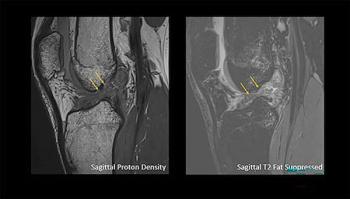
Global MRI Initiative Looks to Improve Brain Injury Treatment
Worldwide effort will amass large datasets from institutions that can be used to identify long-term traumatic brain injury and augment therapies.
A substantial international effort, bringing together experts from a variety of specialties, is now in motion with the goal of augmenting the use of MRI to better determine the long-term impacts of traumatic brain injury.
Dubbed ENIGMA, this initiative based at the University of Southern California and conducted in conjunction with the Norwegian University of Science and Technology (NTNU), is designed to collect, combine, and analyze large brain imaging data sets from around the world, searching for connections that cannot be identified on single studies.
The team shared the specifics of this initiative in
“A major challenge in the research is to figure out which injury characteristics and which changes in the brain caused by the injury can predict how patients will recover and what follow-up they need,” said Alexander Olsen, Ph.D., associate professor of psychology and head of the Clinical Neuroscience Laboratory at NTNU. “A big part of the challenge is that individual patients are so different.”
Related Content:
Progress into understanding how the brain responds after a traumatic brain injury has been stymied, largely because most previous studies were small and they had no standard way for sharing and analyzing data across institutions because patient populations are heterogenous. The hope now, according to this group comprised of 170 researchers from 13 countries, is that investigations into newer and more advanced MRI methods will provide some clinical benefit.
“By pooling our resources, in terms of data, computational power and intellectual expertise,” said Emily Dennis, Ph.D., co-principal investigator for ENIGMA’s main group on brain injuries, “we’ll be able to tackle some of the big unanswered questions in our field, such as how sex impacts outcome, whether there are subtypes within the broader patient population, or how to handle lesions in neuroimaging data.”
While MRI images can reveal the size and type of injury, Olsen’s group will work with research-based MRI methods that use advanced algorithms and statistics. They intend to apply those methods to MRI data that has already been collected from investigators across the globe, including the United States, Europe, Australia, the Middle East, South Africa, and South America.
“We’re working to develop better and more standardized ways of summarizing and making sense of the MRI data.” Olsen said, noting that only an international collaboration can handle data of this magnitude. “We hope to contribute to breakthroughs in research that will benefit patients.”
For more coverage based on industry expert insights and research, subscribe to the Diagnostic Imaging e-Newsletter
Newsletter
Stay at the forefront of radiology with the Diagnostic Imaging newsletter, delivering the latest news, clinical insights, and imaging advancements for today’s radiologists.




























